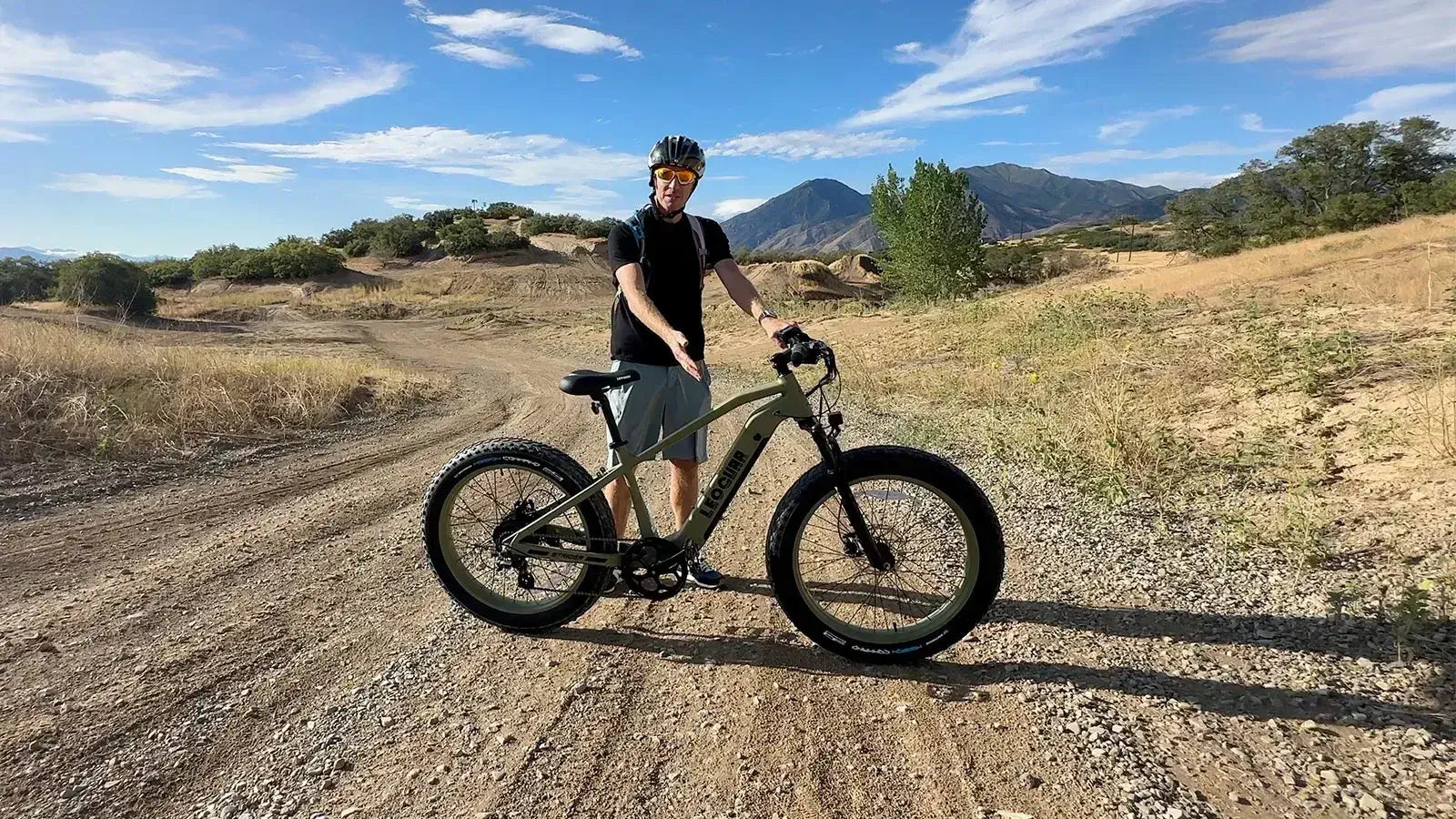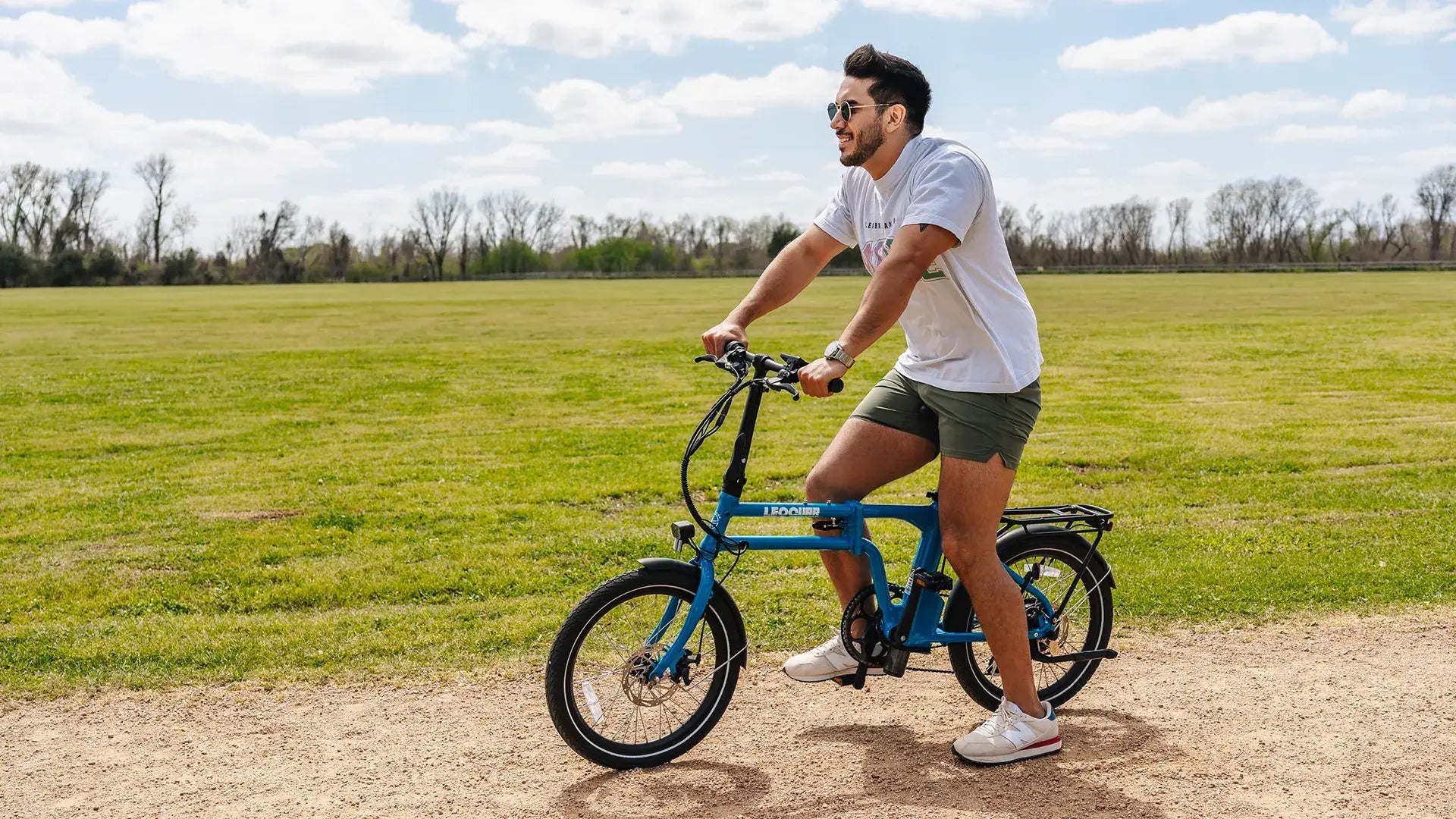
Top Assisted Bikes for Seniors, Commuters, and New Riders in 2025
Find Your Perfect Assisted Bike Ride
Whether it's the scary hill on your way to the store, wanting a ride to work that doesn't make you sweaty, or just wanting to bike again without fear, the right bike can change everything. Assisted ebikes use smart technology to help you pedal. They make biking easy and fun for everyone. These bikes don't replace your effort - they make it stronger, turning "I can't" into "I can't wait to ride."
What Are Assisted Bikes? A Quick Overview
An assisted bike is also called an electric bike or e-bike. It's a regular bike with a small motor that helps you pedal. The key idea is "pedal assist" - the motor only works when you pedal, giving you a boost that makes hills feel easier and long rides feel shorter. It feels like riding a normal bike with a strong wind pushing you forward.
This is different from bikes with throttles, where you can use the motor without pedaling at all, like a scooter. While throttles are useful, pedal-assist bikes feel more natural and keep you active during your ride.
You need to understand the three e-bike types to know where and how you can ride safely.
- Class 1: Only pedal assist (no throttle). The motor helps only when you pedal and stops helping at 20 mph. This type is welcome on most bike paths and trails, making it perfect for beginners and seniors.
- Class 2: Has both pedal assist and a throttle. Both systems stop giving power at 20 mph. This class lets you choose between pedaling or cruising.
- Class 3: Only pedal assist, but goes up to 28 mph. These bikes are great for people who need to keep up with city traffic but often can't use shared paths.

Best Assisted Bikes for Seniors
For many seniors, an assisted bike brings back freedom and fitness. It gives you great low-impact exercise, a way to enjoy being outside, and helps you stay independent. The key is picking a bike that puts comfort and safety first. When we talk with older riders, we focus on these features.
Step-Through Frames
This is the most important feature for easy use. A low, step-through frame means you don't have to lift your leg high over the bike, which can be hard or painful if your hips or knees are stiff. We've seen this feature make the difference between a bike that gets used every day and one that sits in the garage. Being able to get on and off easily gives you a huge confidence boost.
Upright Riding Position
An upright riding position, common on cruiser-style bikes, reduces strain on your back, shoulders, and wrists. You can ride comfortably for longer and see your surroundings better, which makes you safer.
Cushioned Seats and Shock Absorption
A wide, well-padded seat with a shock-absorbing seat post or front suspension smooths out bumps in the road. This makes riding much more comfortable and less jarring on your body.
Simple Controls
The display and controls should be easy to understand. Large, clear screens showing speed, battery life, and assist level are essential. The buttons to change assist levels should be easy to reach and use without taking your hands off the handlebars.
For seniors, we recommend comfortable cruisers like the Electric Bike Company Model S or stable electric trikes like the Rad Power Bikes RadTrike. These models have the features that make cycling safe and enjoyable, matching research on the benefits of e-biking for older adults by making activity easier to do.
Must-Have Features for Senior Riders:
- Low step-through frame for easy access.
- Swept-back handlebars for an upright, relaxed position.
- A large, cushioned seat.
- Simple, easy-to-read display and controls.
- Puncture-resistant tires for peace of mind.
Top Assisted Bikes for Daily Commuters
Assisted bikes are changing how people get to work every day. They solve problems with traffic jams, high gas costs, and help you arrive at work feeling energized, not tired. For a bike to truly replace a car, it needs to be fast, efficient, and totally reliable.
Long Battery Life
The average one-way trip to work in the U.S. takes about 27 minutes. A commuter bike must have a battery that can easily handle a round trip without causing "range worry." A battery with at least 500-600 watt-hours (Wh) gives you peace of mind that you can get to work and back, even using higher assist levels, without needing to charge during the day.
Strong Tires
City streets have glass, potholes, and debris everywhere. Puncture-resistant tires are a must for commuters. A flat tire can ruin your morning, so tires with strong casing and protective layers are essential for reliability.
Built-in Racks and Fenders
A commuter bike isn't just for you - it's for your stuff too. Built-in rear racks are a must for carrying a laptop bag, groceries, or a change of clothes in bags. Fenders are equally important, protecting you from spray from wet roads and keeping you clean and dry when you arrive.
Class 3 Speed
For many city commuters, speed equals safety. A Class 3 assisted bike, with a top pedal-assist speed of 28 mph, lets you keep up with city traffic. This means less time with cars trying to pass you, making your ride safer and more efficient. Models like the Aventon Pace 500.3 or Specialized Turbo Vado are excellent examples of commuter-focused design.
Key Features for a Hassle-Free Commute:
- A Class 3 motor for speeds up to 28 mph.
- A large-capacity battery (500Wh or more).
- Built-in front and rear lights for visibility.
- Included fenders and a rear rack for utility.
- Puncture-resistant tires.
Great Assisted Bikes for New Riders
Starting any new activity can be scary, and cycling is no different. Regular bikes can feel wobbly, hills can seem impossible, and technical gear can be confusing. An assisted bike is the perfect way to start, removing these barriers and making your first ride a success. The goal for a new rider is a bike that builds confidence through simplicity and reliable performance.
Focus on these key features:
Easy Handling
A bike with stable design and a low center of gravity is easier to control. It shouldn't feel twitchy or too aggressive. The power from the motor should be smooth and gradual, not jerky, so there are no surprises.
Simple Controls and Displays
A beginner doesn't need dozens of numbers on their screen. A clean display showing the basics - speed, battery, and current assist level - is all you need. The controls for changing assist levels should be easy to understand, usually simple up/down buttons near your thumb.
Multiple Pedal Assist Levels
This is crucial for building confidence. A new rider can start on a high assist level to get comfortable with the bike and conquer a hill that seemed impossible before. We've seen this ourselves - that immediate sense of success is a powerful motivator. As they get stronger and more confident, they can gradually lower the assistance, taking on more of the work themselves.
Leoguar Fastron ST Fat Tire Ebike is a solid choice for seniors and new riders who want confidence and comfort on every ride. With a powerful 750W motor and 720Wh battery, it can reach up to 60 miles—plenty for daily errands or scenic weekend trips. The step-through frame makes mounting easy, while 26×4.0" fat tires smooth out bumps, sand, and uneven paths. Plus, its 28 MPH top speed gives commuters a welcome boost without feeling overwhelming. Whether you're just getting into electric biking or want something steady and strong, the Fastron delivers ease and performance in one package.

Key Tech Features That Make a Difference
Once you know your rider type, understanding a few key technical parts will help you choose the perfect bike. This is what separates a good ride from a great one.
Motor Matters: Mid-Drive vs. Hub-Drive
The motor is the heart of your assisted bike. Where it's placed dramatically changes how the ride feels.
| Feature | Mid-Drive Motor | Hub-Drive Motor |
|---|---|---|
| Feel | Natural and balanced. Power goes to the cranks, boosting your own pedaling effort. | Like being "pushed." Power is in the wheel hub (front or rear), moving the bike forward. |
| Best Use | Hilly areas and performance riding. Excellent for climbing as it uses the bike's gears. | Flatter commutes and budget-friendly options. Simpler and very reliable. |
| Maintenance | Can be more complex to service. | Easier to service or replace as it's a self-contained unit. |
The Feel of the Ride: Torque vs. Cadence Sensors
The sensor tells the motor when to work. This is one of the most important, yet often overlooked, parts that determine ride quality. From our experience, this is the most important "feel" factor. A torque sensor feels natural, like your own legs suddenly became stronger - the more you push on the pedals, the more help you get. It's responsive and seamless. In contrast, a cadence sensor is more like an on/off switch - as long as you're pedaling, you get a set amount of power for your chosen assist level. It's simpler and very effective, but can sometimes feel less natural, with a slight delay before the power kicks in or out.
Battery & Range: How Much is Enough?
Don't just look at the maximum advertised range, as it's often based on perfect conditions. Real-world range depends on:
- Your weight
- Hills and terrain
- The assist level you use
- Wind and tire pressure
As a simple rule: For short city trips and casual rides on mostly flat ground, a 400Wh battery is often enough. For long commutes, hilly areas, or if you plan to use higher assist levels a lot, look for a battery with 500Wh to 750Wh to make sure you have power to spare.
Frequently Asked Questions
1. How far can I ride on a single charge?
Most assisted bikes can go 20-60 miles on one charge, depending on the battery size, how much you use the motor, your weight, and the terrain. For daily commuting, expect about 25-40 miles of real-world range with moderate assist use.
2. Do I need a license to ride an assisted bike?
No, you don't need a license for Class 1 and Class 2 e-bikes in most states. Class 3 bikes may have different rules depending on where you live. Always check your local laws before riding.
3. How long does it take to charge the battery?
Most e-bike batteries take 3-6 hours to fully charge from empty. Many riders charge overnight or during the workday. Some batteries can be removed for convenient indoor charging.
4. Can I ride an assisted bike in the rain?
Yes, most assisted bikes are designed to handle light rain and wet conditions. However, avoid riding in heavy storms or through deep puddles. Always dry your bike after wet rides and store it in a dry place.
5. What maintenance do assisted bikes need?
Assisted bikes need regular bike maintenance like tire pressure checks, brake adjustments, and chain lubrication. The electrical parts usually need little maintenance, but you should keep the battery charged and have the system checked by a professional once a year.









































Leave a comment